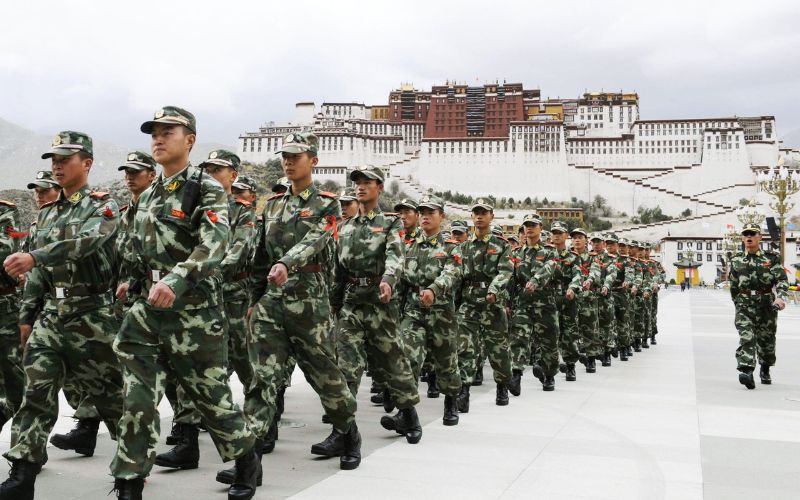
Tibetan Review
A significant increase in the use of unmanned aerial vehicles by PLA has been reported in Tibet & along LAC, a recent report by Observer Research Foundation (ORF) that studies the capability-related and institutional changes in #China's military in recent years has suggested.
"The PLA deployed its Type-15 tank, along with the new 155-MM vehicle-mounted howitzer, for the first time in the PLA’s high-altitude military exercise held in Tibet in early January 2020. Since then, the Sino-Indian border standoff, which began in early May 2020, confirmed the presence of the new Type-15 tanks on the Tibetan Plateau as part of the PLA’s 75th Group Army", observed the report.
The report noted a significant increase in the use of unmanned aerial vehicles by the PLA in Tibet and along the LAC. Recent satellite imagery of a Chinese military garrison on the Tibetan plateau had shown truck-mounted unmanned aerial vehicles. China also reportedly released videos of swarms of quadcopter drones being used to supply rations and other essential items to personnel deployed close to the border.
The report also noted that China’s new version of a gyroplane was commissioned and deployed in the so-called Tibetan Autonomous Region (TAR) in February 2020.
The report also noted the construction of multiple heliports, new border airports, military logistic hubs, "a panoramic, high-precision spatial datum that covers the uncharted border regions of Tibet" and PLA’s establishment of the Tibetan Military Command (TMC).
In recent years, China has also increased its dual-use infrastructure development in Tibet, with a particular focus on improving transport links, which will facilitate the deployment of military forces. The fast-paced growth of infrastructure in Tibet is "dual-use" in nature: they serve both civil and military purposes as far as PRC is concerned. China is building a dual-use infrastructure in Tibet to enable the rapid deployment of its forces at strategic locations in any eventuality but at the same time fulfill CCP's strategy of cultural assimilation of Tibet.
China's military modernization in Tibet is driven by domestic political considerations. The Chinese Communist Party (CCP) sees maintaining control over Tibet as a key priority, and a strong military presence in the region is seen as a way to achieve this.
This is happening alongside the growing concern about human rights abuses in Tibet, including political repression, cultural suppression, and restrictions on freedom of religion. The international community should put pressure on China to address these issues and respect the human rights and freedoms of the Tibetan people. It is crucial to promote dialogue, transparency, and respect for human rights in the region to find a peaceful resolution to the ongoing tensions.
Edited and collated by Team TRC